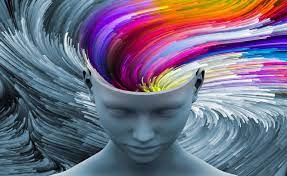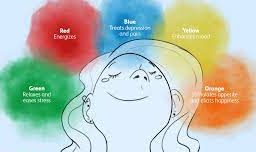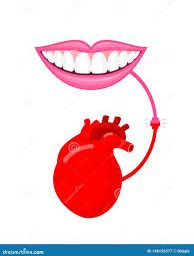
How Different Colors Affect Your Emotions and Well-Being
Color psychology plays a pivotal role in understanding the intricate relationship between hues and our mental health. Dive into this exploration to uncover how colors can profoundly influence our emotions and overall mental health.

Colors are all around us, and they have the remarkable ability to evoke emotions, influence our perceptions, and even impact our mental health. From the vibrant hues of a beautiful sunset to the calming tones of a serene forest, colors play a significant role in shaping our experiences and moods. In this post, we’ll explore the fascinating relationship between colors and mental health, shedding light on how various shades can positively affect our emotions, reduce stress, and promote overall well-being. Colors play a significant role in our daily lives, affecting our emotions, moods, and overall mental health. The impact of colors on our psyche has been studied for centuries, with various cultures attributing different meanings to different hues. In recent years, scientific research has delved deeper into understanding the psychological effects of colors, shedding light on how they can influence our mood and mental health. This post aims to explore the fascinating relationship between colors and our emotional state, providing insights into how specific shades can impact our mental health.
The Psychology of Colors
The field of color psychology delves into the study of how different colors can evoke specific emotions and feelings in individuals. For example, warm colors like red, orange, and yellow tend to energize and evoke feelings of warmth, passion, and excitement. In contrast, cool colors such as blue, green, and purple often promote a sense of calmness, tranquility, and relaxation. Understanding these associations can help us strategically incorporate colors into our daily lives to enhance our mood and mental health state.
The Power of Warm Colors on Mental Health
Warm colors, such as red, orange, and yellow, are known to evoke feelings of energy, passion, and warmth. These hues have been associated with increased heart rate and blood pressure, stimulating both physical and mental activity. Red, for instance, is often linked to strong emotions like love and anger. It can raise adrenaline levels and create a sense of urgency or excitement. Orange is often associated with enthusiasm and creativity, while yellow is known to promote happiness, positivity and optimism. It can uplift our spirits and infuse energy into our lives. Similarly, red is known for its stimulating properties, encouraging feelings of passion and vitality. Including splashes of yellow and red in living spaces can add vibrancy and boost motivation, making them excellent choices for home offices or creative areas.

The Calming Effect of Cool Colors on Mental Health
Cool colors, including blue, green, and purple, have a calming and soothing effect on the mind and body. Blue is often associated with tranquility and serenity, known to reduce stress levels and promote relaxation. It can also enhance productivity and focus. Green is closely linked to nature and symbolizes growth and harmony. It has been found to alleviate anxiety and promote a sense of balance. Purple, on the other hand, is associated with spirituality and creativity. It can stimulate imagination and encourage introspection. Incorporating cool colors into your surroundings can create a peaceful atmosphere that promotes mental health clarity and emotional stability. Research suggests that gazing at blue or green environments can have a calming effect, lowering heart rate and reducing feelings of anxiety. Incorporating these colors into interior spaces, like bedrooms or meditation areas, can create a peaceful ambiance conducive to mental health and relaxation.
The Impact of Neutral Colors on Mental Health
Neutral colors, such as white, gray, and beige, are often considered timeless and versatile. While they may not evoke strong emotions like warm or cool colors, they play a crucial role in creating a balanced environment. White is associated with purity and cleanliness, providing a sense of freshness and simplicity. Gray is often seen as sophisticated and practical, promoting a sense of calmness and stability. Beige is known for its warmth and neutrality, creating a comfortable and inviting atmosphere. Neutral colors can help create a harmonious backdrop for other colors, allowing them to shine while maintaining a sense of balance and tranquility. Incorporating neutrals into home decor or clothing choices can provide a sense of stability and comfort.
The Cultural Significance of Colors
Colors also hold cultural significance, with different societies attributing varying meanings to different hues. For example, in Western cultures, white is often associated with purity and weddings, while in some Eastern cultures, it symbolizes mourning. Similarly, red is considered lucky and auspicious in many Asian cultures, while it represents danger or warning in Western cultures. Understanding the cultural connotations of colors is essential to avoid misinterpretation or unintended messages. By being aware of these cultural nuances, we can effectively utilize colors to create the desired atmosphere and evoke the intended emotions.
Personal Preferences
While color psychology provides valuable insights, it’s essential to remember that individual preferences and cultural influences also play a role in how colors affect us. Personal associations and experiences can shape our emotional responses to different colors, so it’s vital to pay attention to how specific shades make us feel personally.

Using Colors Therapeutically
Color therapy, also known as chromotherapy, is a complementary healing technique that uses colors to promote physical, emotional, and mental health. Practitioners of color therapy believe that exposure to specific colors can help balance energy and emotions within the body. While scientific evidence supporting color therapy is limited, many find it a relaxing and enjoyable way to engage with colors and emotions.
Colors have a profound impact on our mood and mental health. They can evoke a wide range of emotions, from excitement and joy to calmness and relaxation. By being mindful of the colors we surround ourselves with, we can create environments that positively influence our mental health. Whether it’s using calming blues to create a peaceful bedroom retreat or energizing yellows to brighten up a workspace, understanding the influence of colors empowers us to curate spaces that support our emotional and mental health journey. Warm colors can energize and motivate us, while cool colors can calm and relax our minds. Neutral colors provide a sense of balance and harmony. Additionally, cultural associations with colors add another layer of meaning to their psychological impact. By understanding the influence of colors on our emotions, we can consciously incorporate them into our surroundings to create environments that promote well-being and enhance our overall mental health. So, whether you’re painting your walls, choosing clothing, or designing a workspace, consider the power of colors and harness their potential to positively influence your mood and mental health.
Disclaimer: The information provided in this content is for general informational purposes only. It is not intended as medical or healthcare advice, diagnosis, or treatment. Always seek the advice of a qualified healthcare professional with any questions you may have regarding a medical condition or healthcare decisions.













